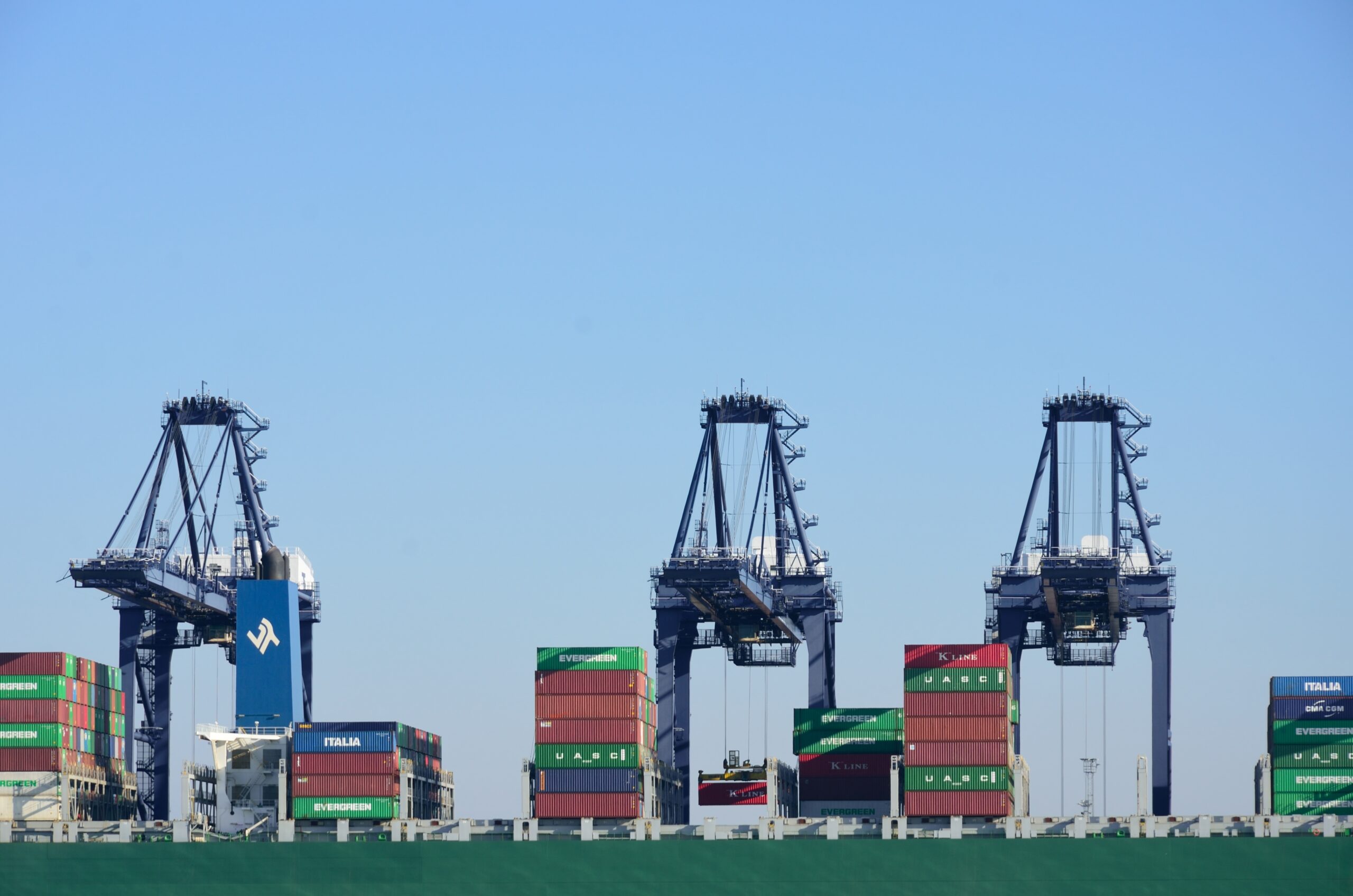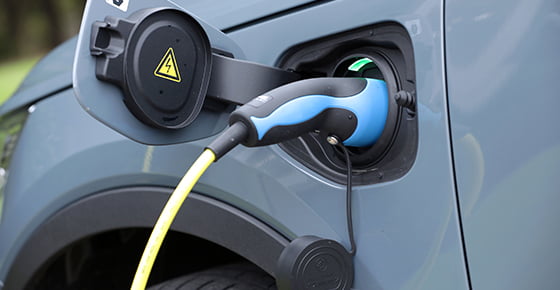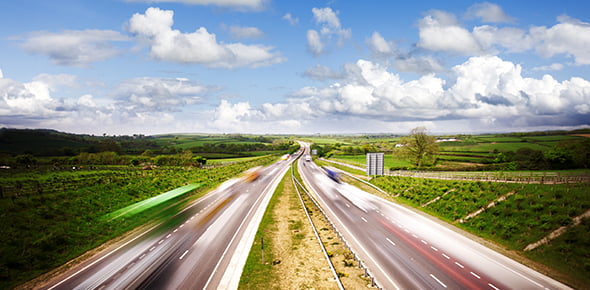
- Record 42 million vehicles on UK roads in 2024, as volumes rise 1.4%, with cars up 1.3% to 36,165,401 units.
- Number of electric cars in use hits monumental milestone, passing the one million mark with more than 1.3 million now on the road, up 38.9% year on year.
- Average car fleet CO2 emissions down -1.6% as an ever-expanding EV model choice plus lower-emission hybrids and conventionally fuelled vehicles replace older units.
- Fleet renewal slows as Brits hold on to their cars for longer, with 43.4% of the parc over 10 years old and average age of car in use rising to new high of 9.5 years.
File download
Motorparc 2024
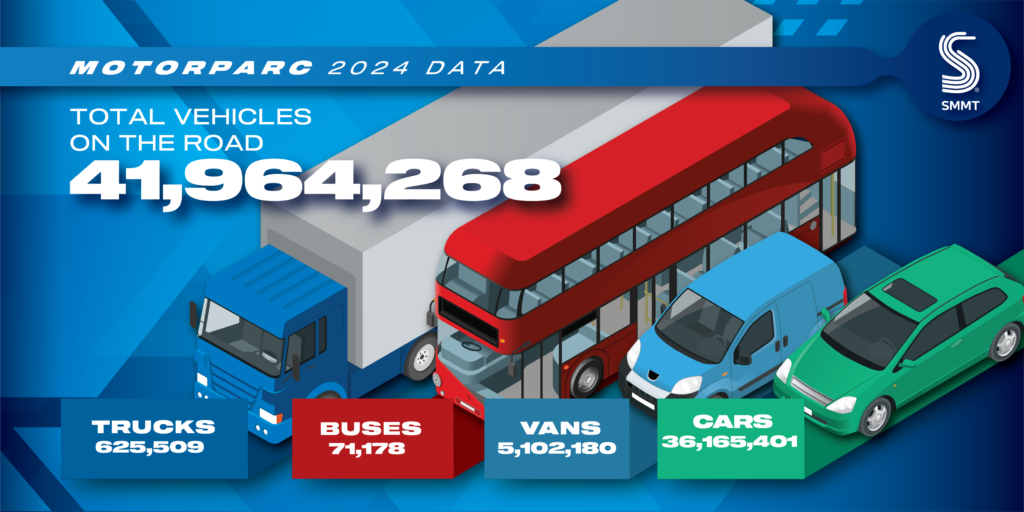
The number of vehicles on British roads reached its highest ever level in 2024, rising by 1.4% to 41,964,268, according to new Motorparc data published today by the Society of Motor Manufacturers and Traders (SMMT).
The number of cars in use also reached a new high, growing by 1.3% or 470,556 units to 36,165,401, marking the third consecutive year of growth and the second-biggest volume gain since 2016.1 The increase reflects growth in the new car market, which in 2024 saw 1.953 million new cars registered, with battery electric vehicles (BEVs) making up 19.6% of the market.
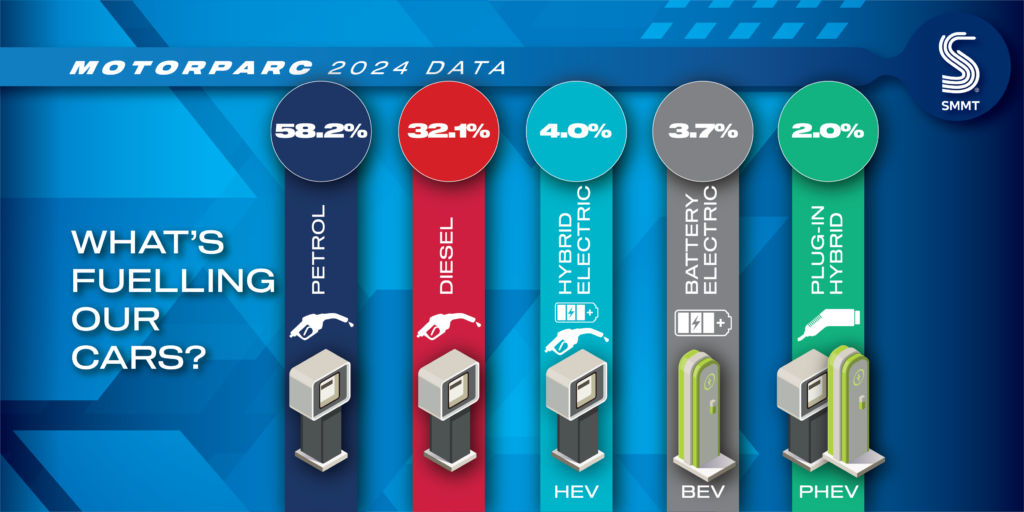
Van use grew to record levels, up 1.8% to 5,102,180 units, with more than one million of these workhorses added to roads since 2015.2 Heavy goods vehicle volumes remained almost unchanged, down just -0.1% or 364 units, at 625,509 units. Bus and coach volumes fell by just -0.1% to 71,718 units, although this means that the UK public transport fleet is now the smallest since records began.
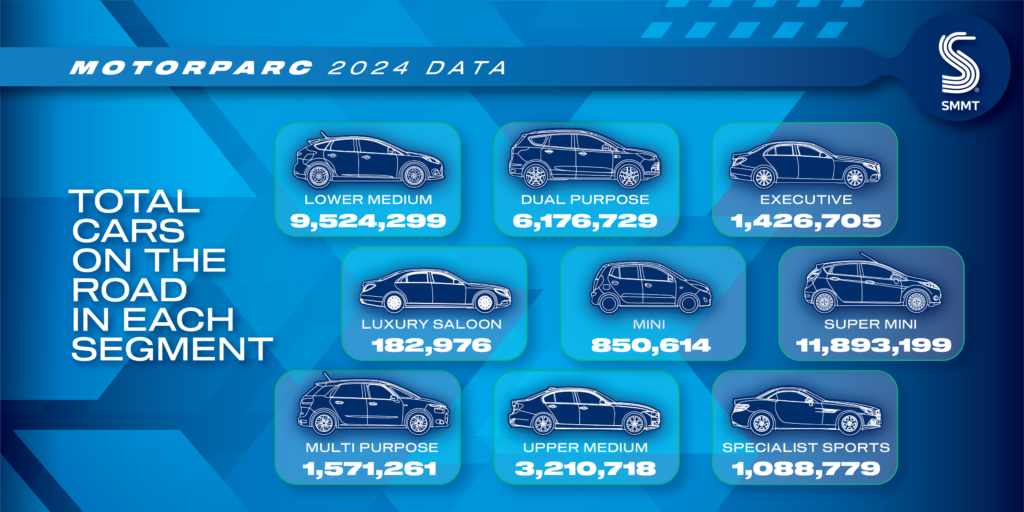
Britain’s vehicle parc continues to decarbonise, with a 34.6% increase in plug-in vehicles (BEV and plug-in hybrid) – now accounting for one in 20 (5.1%), or 2,157,360 vehicles in use. Manufacturer discounting has driven up demand for battery electric cars which saw them remain the fastest growing sector of the parc, breaking the million motor milestone as volumes soared by 38.9% to 1,334,246 units. As a result, BEVs comprise 3.7% of cars in use, up a full percentage point on 2023.
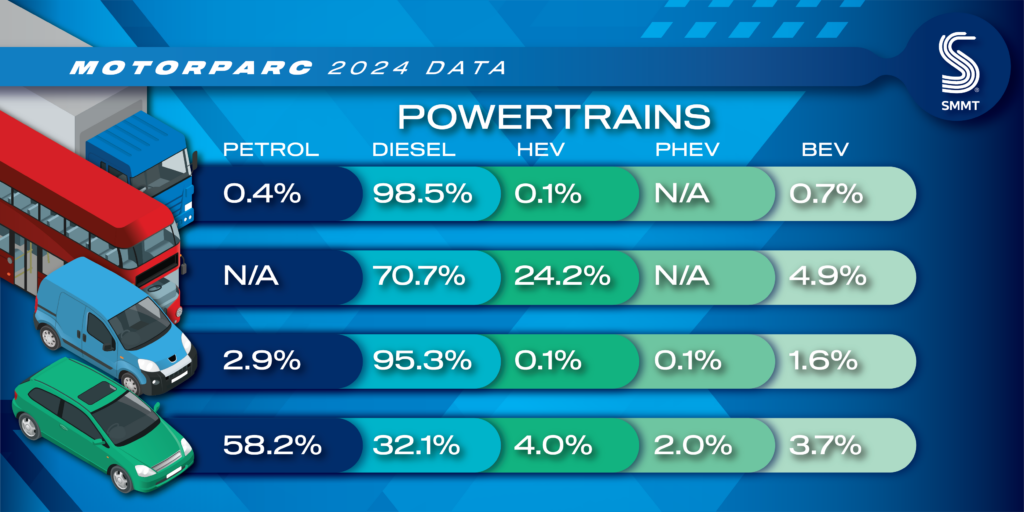
Conventionally fuelled cars remained the most dominant powertrains, with petrol-powered motors rising by 1.0% to 21.0 million, and an almost unchanged market share of 58.2%, while diesel volumes fell -4.4% to 11.6 million – making up 32.1% of cars in use – and marking the fuel type’s fifth straight year of decline.
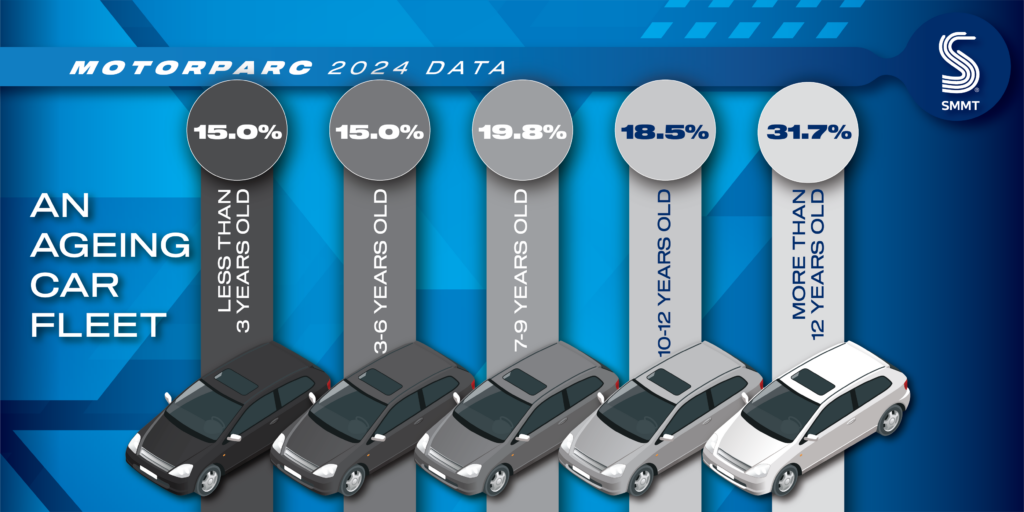
The proliferation of newer lower and zero emission technologies across the parc led to a reduction in average car CO2, which dropped by -1.6%. This was fuelled by a significant fall in company car emissions, down -5.6% thanks to fiscal fleet incentives and manufacturer investment into an ever-expanding range of electrified model choices to appeal to every motorist. Private car CO2 also dipped, falling marginally by -1.0%, demonstrating a need for consumer fiscal incentives to deliver rapid decarbonisation.
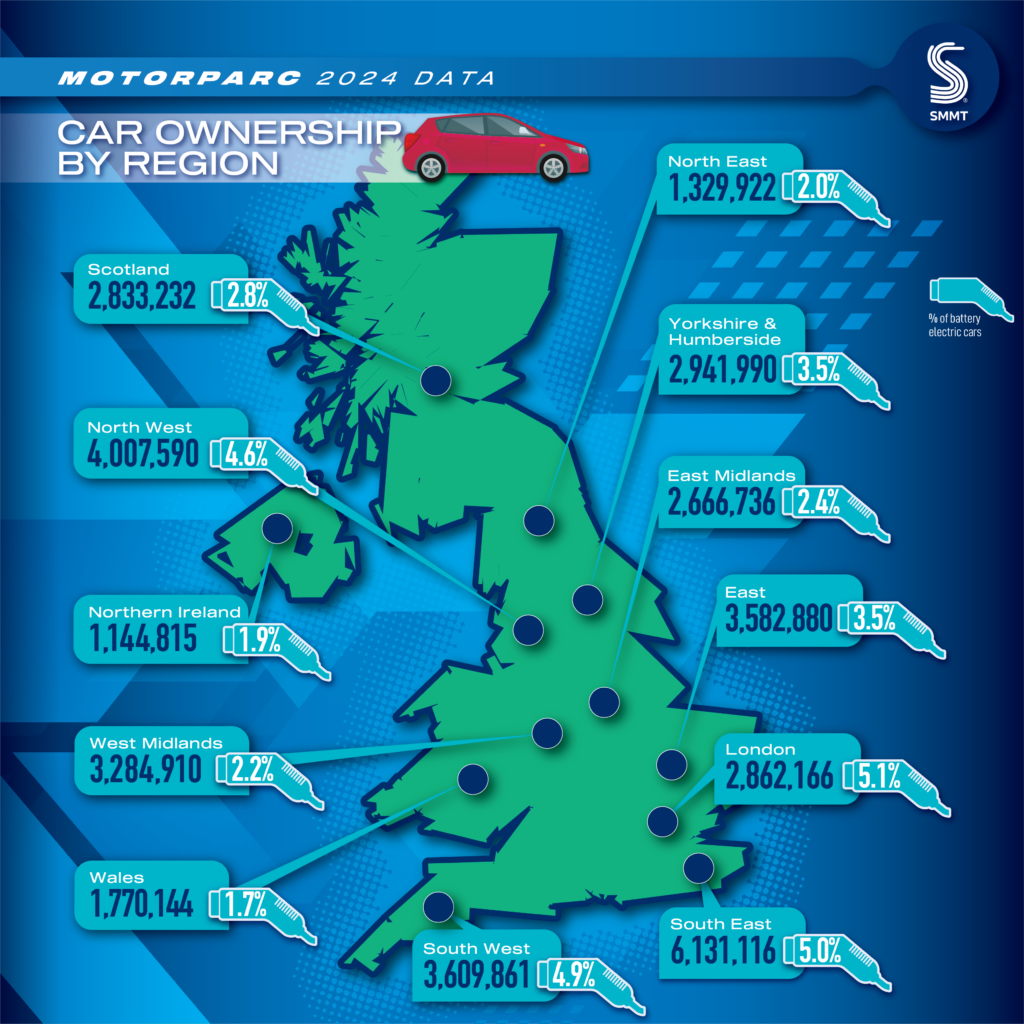
Lower uptake in the new car market means motorists are holding onto their cars for longer, with the average age of a car on the road now 9.5 years old, up from 9.3 years in 2023 and much older than the eight year-old average of 2019. More than two-fifths (43.4%) of the total parc has now been in use for more than a decade, predating the introduction of lower-emission Euro 6 technology which has done much to improve air quality.
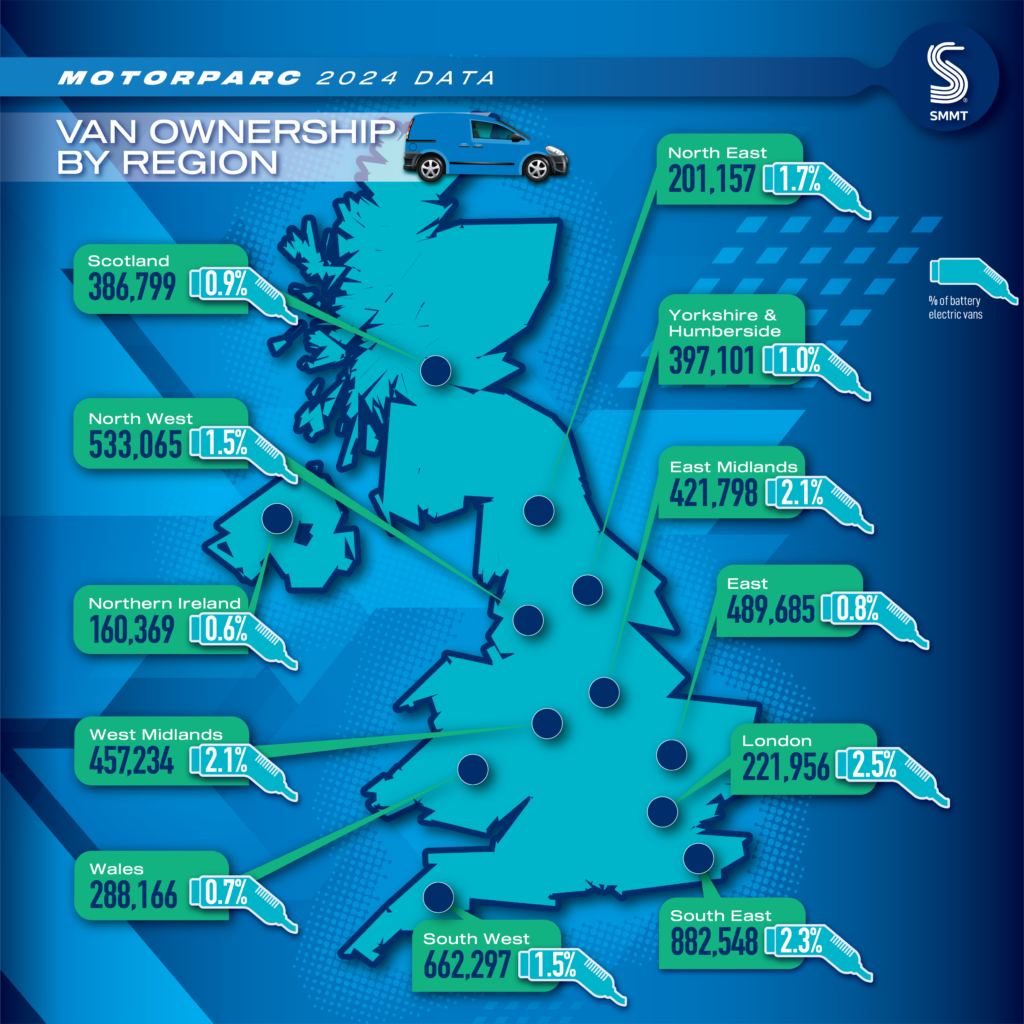
The commercial vehicle parc is also decarbonising, with buses leading the way with an 81.8% increase in zero emission units on last year to 3,494 – accounting for almost one in 20 (4.9%) buses in use. Vans, which support businesses across the country, are also increasingly going zero-emission, with battery electric van volumes increasing by 31.6% to 80,476 units – or 1.6% of the parc. Electric truck use also rose, but overall they account for fewer than 0.1% of the fleet.
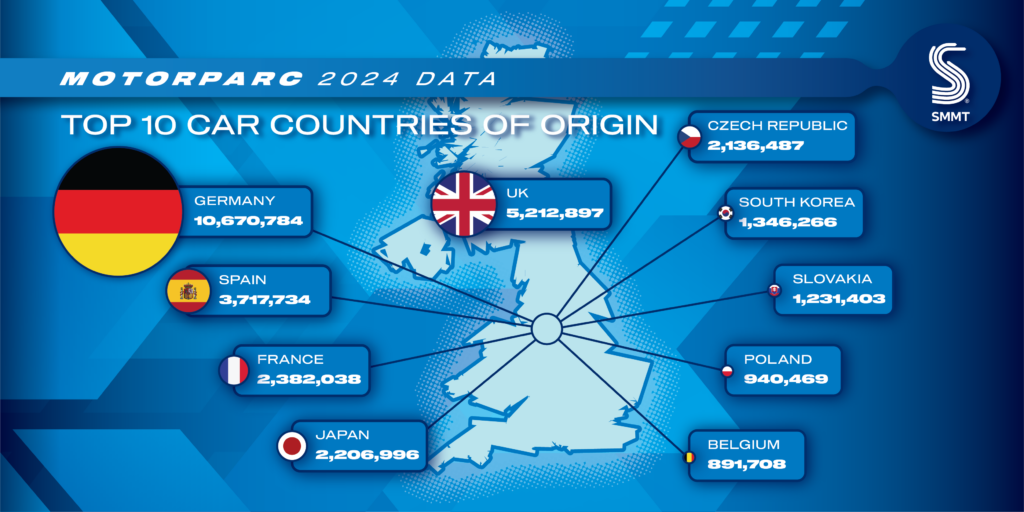
Britain’s vehicle parc is growing, providing essential mobility for the nation while reducing its environmental impact. However, there is scope to push environmental improvements much faster as motorists are holding onto their cars for longer, some one and half years longer on average, than only five years ago.
Drivers need more incentives and greater confidence in infrastructure investment if we are to replace the high volumes of older high-emission cars with zero-emission alternatives. Success will keep the country on the move while driving up economic growth from every business dependent on road transport.
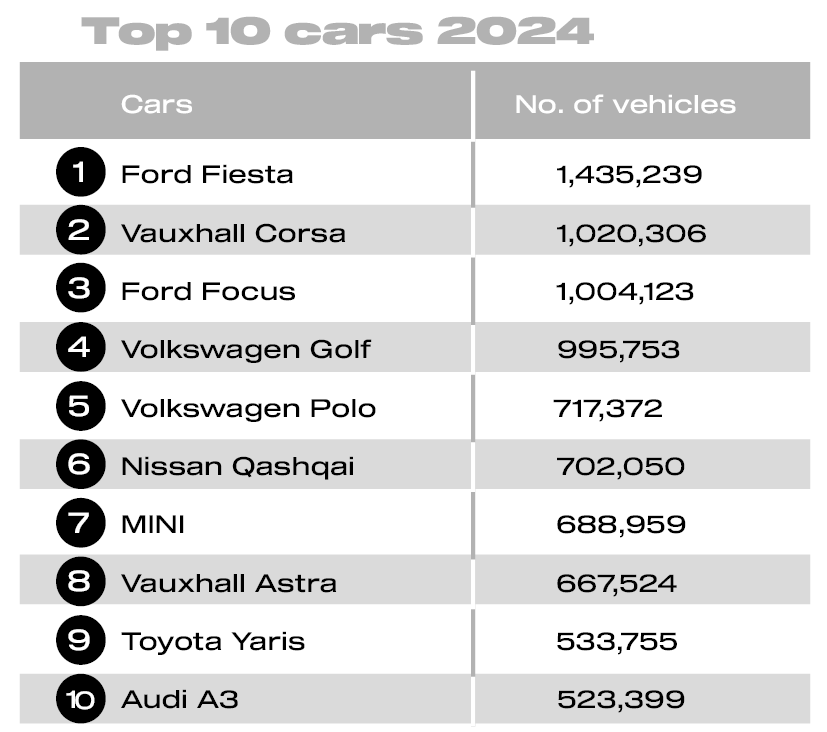
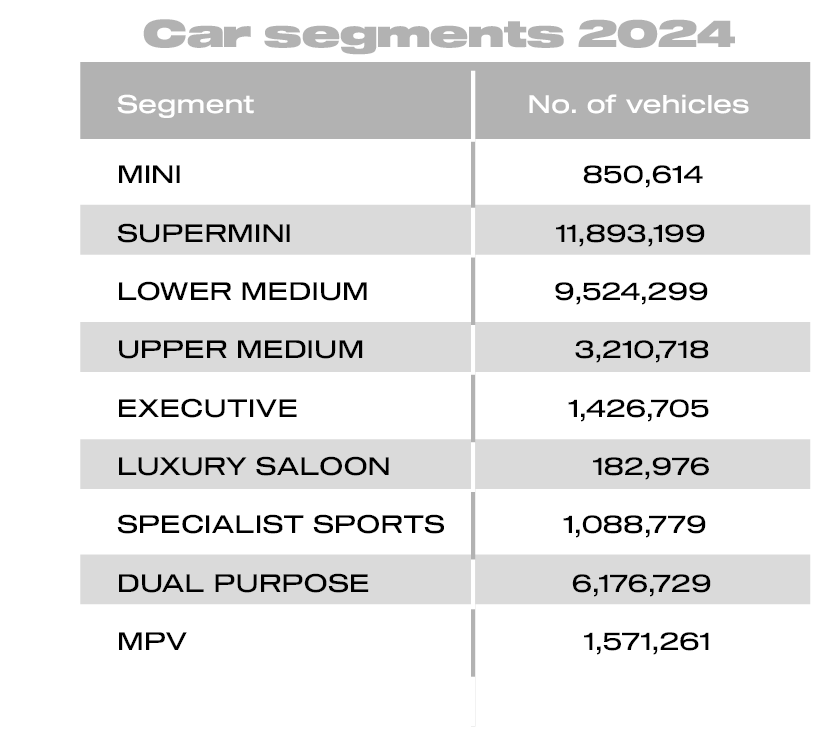
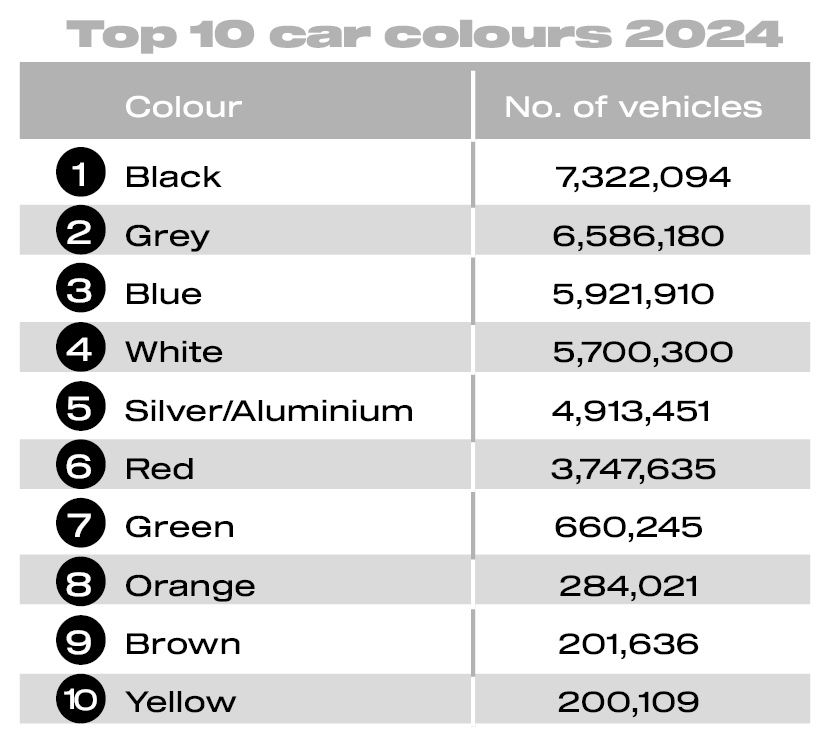
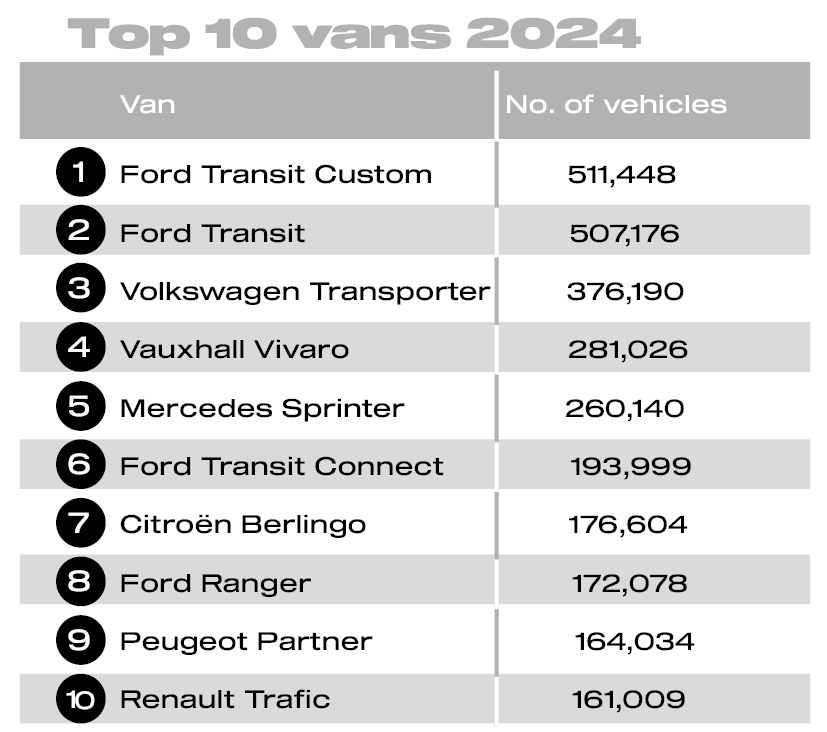
Did you know?
- Superminis remain the most popular car type in use, closely followed by lower medium models. These segments account for almost three out of five cars (59.2%) on the road, making up 11,893,199 and 9,524,299 units respectively.
- Germany was the largest source of cars on UK roads, accounting for 29.5%, with the UK (14.1%) the second and Spain (10.3%) the third. China is now the 12th largest source of cars.
- Black remains the most popular car colour of choice, accounting for more than one in five vehicles in use today (20.2%).
- Automatic transmissions continue to rise as more electric vehicles reach the road, up 9.5%, while manual transmissions have fallen -2.6%.
- For Wicked musical fans, 660,245 green and 24,863 pink cars were in use on UK roads last year.
- While red might seem the archetypal colour for buses, white coloured buses are actually the most popular – with 19,797 in use, equal to 27.8% of the fleet.
- London and the South East are home to the most cars (8,993,282), followed by the North West (4,007,590) and the South West (3,609,861).
- London and the South East is the region with the most registered EVs in use (456,289).
- Of all cars in use, 35.1% are registered to women and 51.1% to men, with a 4.0% increase in women owners over the last five years.3
- Almost six in 10 EVs are registered to companies, compared with companies accounting for just 10.0% of the overall car parc.
- The five most popular cars on UK roads in 2024 accounted for over 5,220,195 million in use – these are the Ford Fiesta at 1,465,402, Vauxhall Corsa at 1,035,440, Ford Focus at 1,004,153, Volkswagen Golf at 997,788 and Volkswagen Polo at 997,788.
- Unsurprisingly, white coloured vans remain the most popular at 2,745,635 units, but for those looking for a Scooby Doo ‘mystery machine’, there are 372,993 blue vans in use.
Notes to editors
1 Motorparc car volume gain, 2023: 546,800 units; Motorparc car volume gain, 2016: 835,938
2 Motorparc van volumes 2015: 4,007,331 units
3 The remainder of those registered are to companies or vehicles without the gender listed; Female ownership volumes, 2019: 12,190,693 units
